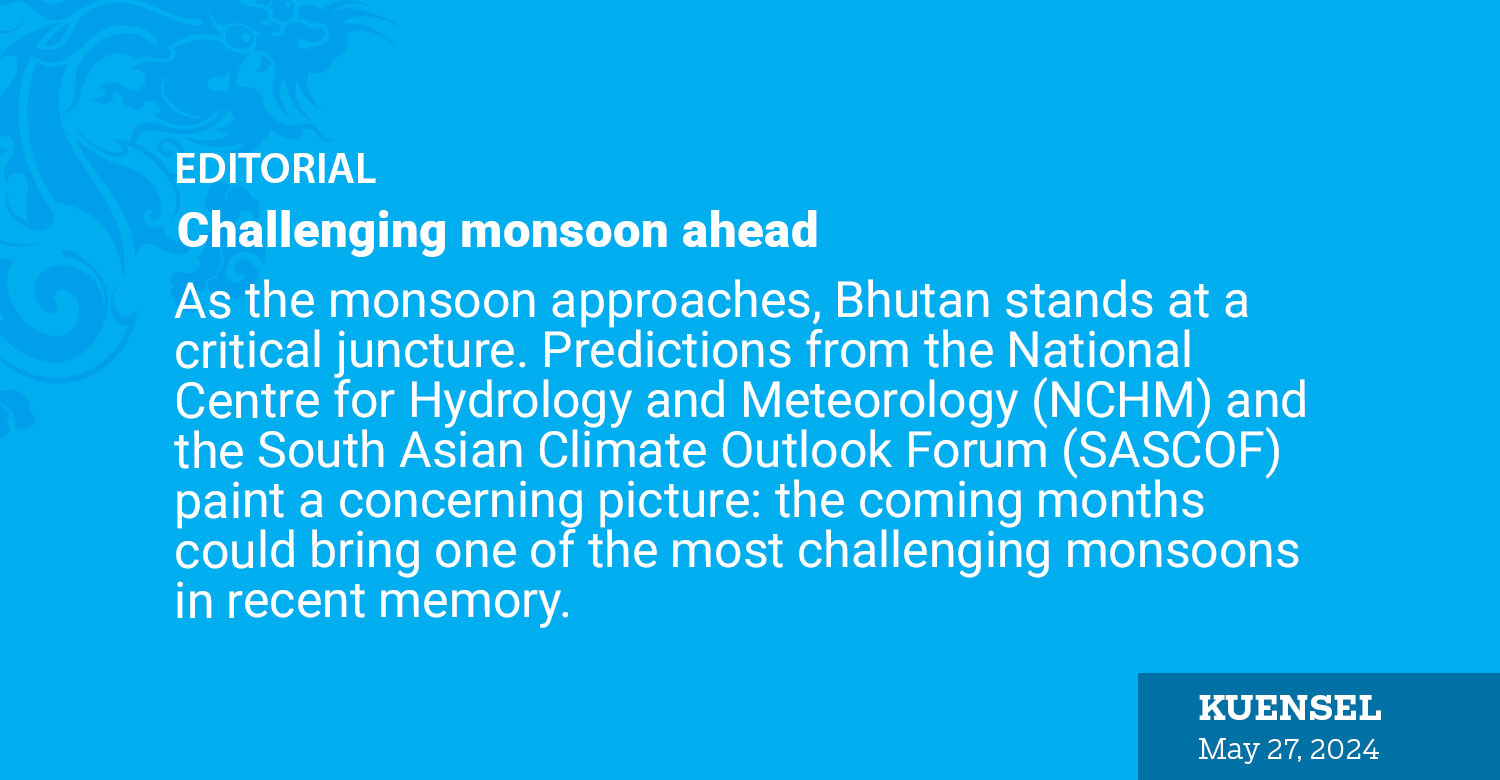As the monsoon approaches, Bhutan stands at a critical juncture. Predictions from the National Centre for Hydrology and Meteorology (NCHM) and the South Asian Climate Outlook Forum (SASCOF) paint a concerning picture: the coming months could bring one of the most challenging monsoons in recent memory. With slightly above normal temperatures and rainfall expected between June and September, the question of our preparedness against natural disasters looms large.
Bhutan’s unique topography makes it particularly susceptible to even minor variations in weather patterns. The anticipation of above-normal rainfall should prompt immediate reflection on our disaster readiness. Last year’s experience with slightly below normal rainfall still led to severe weather events that wreaked havoc across the country. From roadblocks between Thimphu and Phuentsholing to flash floods causing significant damage in Wangdue, Phuentsholing, Gelephu, Punakha, and Trongsa, the impacts were profound and far-reaching.
This year, the stakes are even higher. The forecast of high rainfall against a backdrop of warming trends, with both minimum and maximum temperatures exceeding normal levels, suggests a volatile climate ahead. The Hindu Kush Himalayan region, of which Bhutan is a part, has been singled out for heightened vigilance. Experts have cautioned that the impending heavy rains could lead to extreme weather conditions, reminiscent of recent events in Afghanistan, where floods claimed over 300 lives, destroyed thousands of homes, and heatwaves forced school closures, impacted crops, and sparked forest fires.
In Bhutan, the monsoon season is both a lifeline and a potential threat. It is essential for agriculture, replenishing water sources, and sustaining the natural ecosystem. However, when these rains come in excess, they can devastate infrastructure, displace communities, and disrupt lives. Our ancient wisdom teaches us that it is wise to take precaution before the onslaught of illness; and scour the channel before water comes. This adage is a timely reminder of the importance of proactive measures in the face of nature’s unpredictable forces.
Preparations must begin now. Strengthening infrastructure to withstand floods, landslides, and roadblocks is paramount. This includes ensuring that critical roadways, particularly those connecting major cities and towns, are reinforced and that drainage systems are capable of managing excessive rainfall. Community awareness and preparedness programmes should be intensified, educating citizens on emergency procedures and safety measures.
Investment in early warning systems and real-time weather monitoring can provide crucial lead time to mitigate the impacts of extreme weather events. The integration of traditional knowledge with modern technology can enhance our resilience. Bhutan’s commitment to environmental conservation and sustainable development must be leveraged to safeguard both people and nature.
The essence of our preparedness lies not just in reacting to crises but in building a robust foundation that can withstand the tests of nature.


